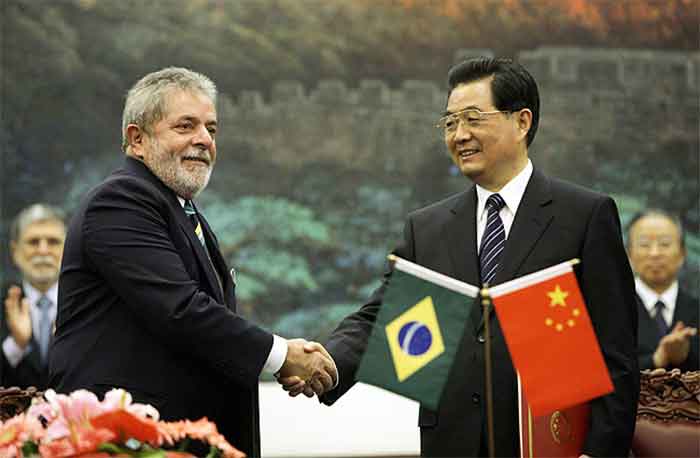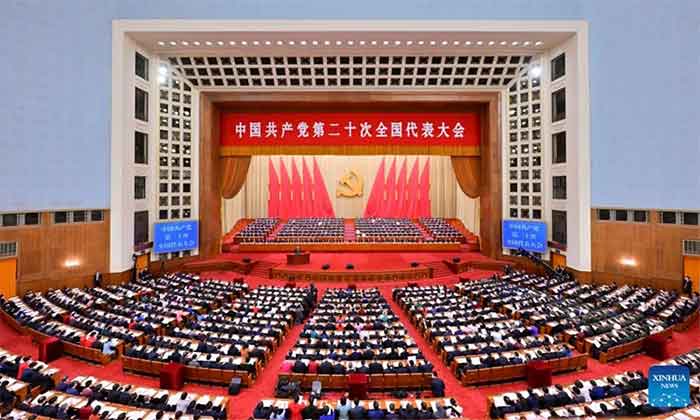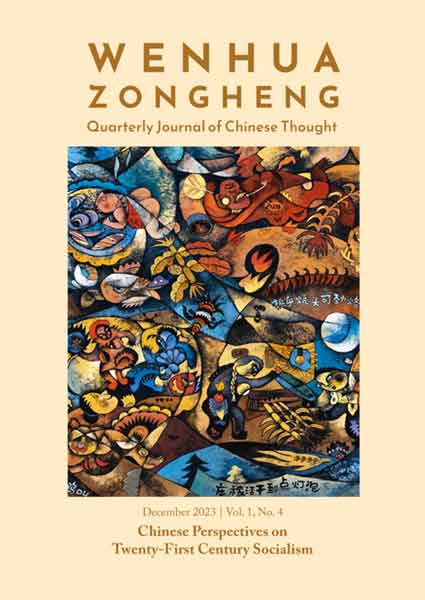
The election victory of Luiz Inácio Lula da Silva as the president of Brazil for a third term on October 30 is expected to revise the relations between Brasília and Beijing. Brazil is going through a serious economic, political, social, and environmental crisis. Fighting poverty, resuming economic growth with income redistribution, reindustrializing the country, and reversing environmental abuses are urgent tasks, which will demand unprecedented national and international finesse from the new government. The economic partnership between Brazil and China, which has advanced greatly in the last two decades, may be one of the keys to reversing the crisis that Brazil faces. But some challenges will need to be faced with diplomacy and strategic planning.
Despite the “insults” directed by the government under former Brazilian President Jair Bolsonaro toward China, especially during the pandemic, and the inevitable distancing of diplomatic relations between the two countries, bilateral trade between Brazil and China has increased. In 2021, bilateral trade between the two countries reached $135.4 billion with Brazil recording a trade surplus of $40 billion with China, which was only surpassed by the region of Taiwan and two countries, Australia and South Korea. China has been Brazil’s largest trading partner since 2009, accounting for almost double the trade volume that Brazil imported from its second largest partner in 2021, the U.S. ($70.5 billion), with which it recorded a deficit of $8.3 billion.
A Profitable, but Unbalanced Trade Relationship
Brazil’s export mix, however, is vulnerable in the long term: it is not very diversified and based on products of low aggregate value. The four main products it exports (iron ore, soy, crude oil, and animal protein) accounted for 87.7 percent of total exports to China in 2021. Meanwhile, the imports of Chinese products to Brazil are highly diversified, with a predominance of manufactured products, and with a high technological index. For example, the main import item from China to Brazil (telecommunications equipment) accounted for only 5.9 percent of imports.
The Brazilian commodities sector, which is an important component of the economy, represented 68.3 percent of exports by Brazil in the first half of 2022 and has contributed for years to the increase in international reserves. On the other hand, the commodities sector has a high concentration of wealth, pays few taxes, generates relatively few and low-skill jobs, is subject to cyclical price changes, and, in many cases, causes environmental damage, which needs to be better controlled by the state. In this sense, the initiative announced by COFCO International—the largest buyer of Brazilian food in China—to monitor and prohibit the purchase of soybeans planted in areas of illegal deforestation in Brazil beginning from 2023 was important.
But it will also require the Brazilian state—which has become notorious in recent years for encouraging deforestation and the invasion of Indigenous reserves—to guarantee the effectiveness of the initiative. China needs Brazil’s natural resources for its development, and Brazil needs the Chinese market for its commodities. But in the medium and long term, Brazil will need to seek greater balance in its trade agenda if it wants to return to being a solid economy. Let’s remember that in 2000, the main Brazilian export product was Embraer’s jet planes, while in 2021, the main exports were iron ore and soybeans. This is just one of the many symptoms of chronic deindustrialization.
Investing Is Necessary but so Is Diversifying
Chinese investments in Brazil have a similar profile to its exports: robust, but not very diversified. In 2021, Brazil received the most Chinese investments in the world, amounting to $5.9 billion (13.6 percent of the global total). Between 2005 and 2021, Brazil was the fourth-largest global recipient of Chinese investments (4.8 percent of the total), only behind the U.S. (14.3 percent), Australia (7.8 percent), and the United Kingdom (7.4 percent). These investments by China have resulted in a fundamental contribution of resources to the Brazilian economy but have not come without its set of challenges. From 2007 to 2021, 76.4 percent of the Chinese investments were concentrated in the energy sector (electricity, and oil and gas extraction), while only 5.5 percent went to the manufacturing industry and 4.5 percent went to infrastructure works, among other greatest needs of Brazil’s economy.
The Brazilian electricity sector was the largest destination for Chinese investments (45.5 percent of the total), but part of this corresponded to the purchase of Brazilian state-owned companies by Chinese state-owned companies. In 2017, the Chinese company State Grid acquired a controlling interest in CPFL Energia, a state-owned company in the state of São Paulo, and in 2021, CPFL Energia bought control of CEEE-Transmissão, a state-owned company in the state of Rio Grande do Sul. For Brazil, these were not good deals and demonstrated the irresponsibility of neoliberal state governments of the Brazilian Social Democratic Party (PSDB), which privatized strategic public assets. China—which would never sell a state-owned energy company to foreigners—took care of its own interests and took advantage of a business opportunity offered by the market. It was not a privatization package imposed by the International Monetary Fund. But would Beijing be willing to accept other investment models that would bring more benefits to both countries?
The Example of the Southern Hermanos
Since 2021, Buenos Aires and Beijing have entered into a series of strategic investment agreements. In February 2022, Argentina joined the Belt and Road Initiative, which is expected to attract $23 billion in Chinese investments for Argentina. Before that, other investments and projects by Chinese companies included the reform of the Argentine railway system ($4.69 billion), and, voluminous investments in the electric sector, such as 1) the expansion of the Cauchari Park, Latin America’s largest solar power plant, which was originally a Sino-Argentinian partnership, 2) the construction of the “Kirchner-Cepernic” hydroelectric complex in Patagonia (costing more than $4 billion), and 3) the construction of the “Atucha III” nuclear plant (costing $8.3 billion), whose financing has an approximately eight-year grace period and, most importantly, it provides for the transfer of Chinese Hualong nuclear technology—mastered in 2021—to the Argentine state, which will control the plant.
Brazil can propose partnerships similar to those by Argentina that are just as or even more strategic, with mutual benefits. Why not propose to exchange commodities (oil and gas) for infrastructure and technology with China, as countries like Iran have already proposed? Or the formation of more Sino-Brazilian joint ventures—which received only 6 percent of Chinese investments (2005-2020), while mergers and acquisitions received 70 percent—that provide for technology transfer to Brazil?
Brazil will need a gigantic effort to reindustrialize its economy at several levels, such as investment in research and development, training of skilled labor, financing, and technology transfer. No other country, such as China, has the financial, industrial, and technological conditions to cooperate with Brazil in numerous promising sectors, like electric vehicles, information technology, 5G, renewable energy, aerospace, biomedicine, and semiconductors. It is up to Brazil to propose a high-level strategic dialogue with China, which reaffirmed in the report of the 20th National Congress of the Communist Party of China that it is committed to helping to accelerate the development of Global South countries. “China is prepared to invest more resources in global development cooperation. It is committed to narrowing the North-South gap and supporting and assisting other developing countries in accelerating development,” President of China Xi Jinping said during the congress.
Marco Fernandes is a researcher at Tricontinental: Institute for Social Research. He is the co-editor of Dongsheng. He is a member of the No Cold War collective. He lives in Beijing.
This article was produced by Globetrotter.
















































